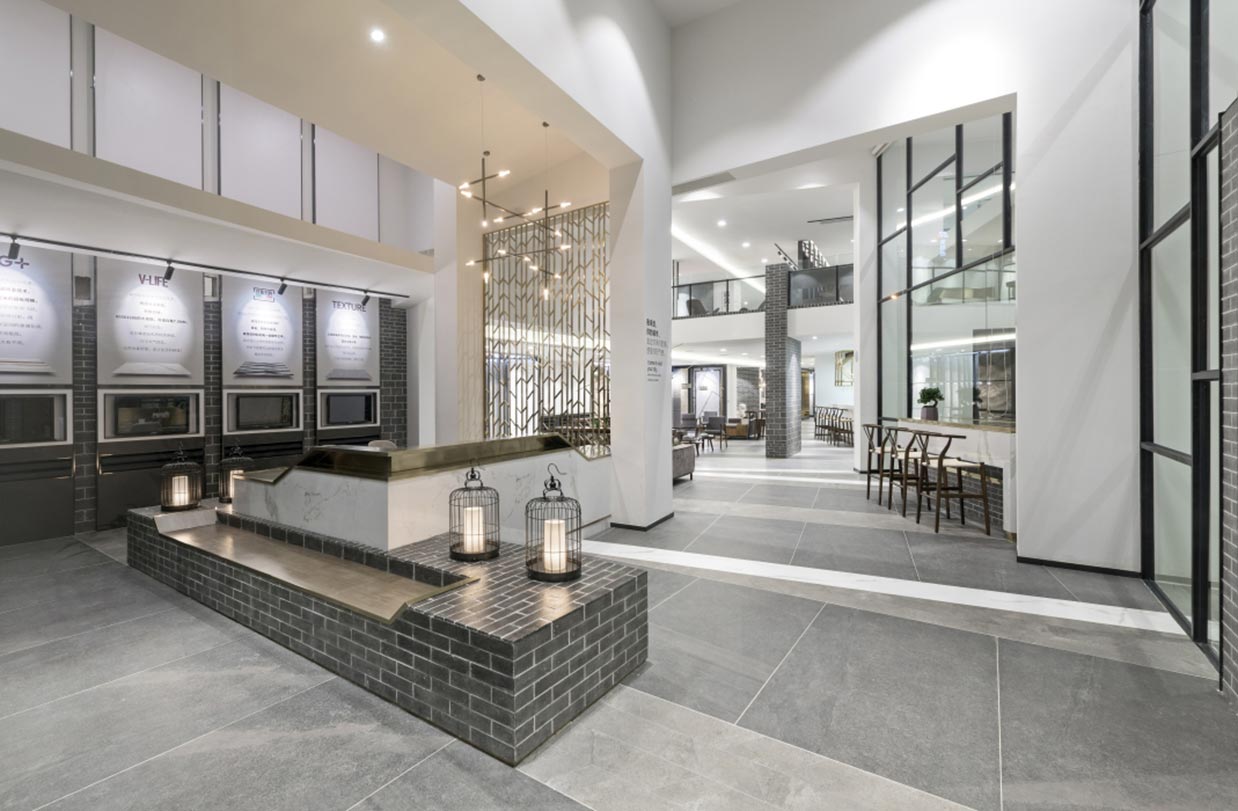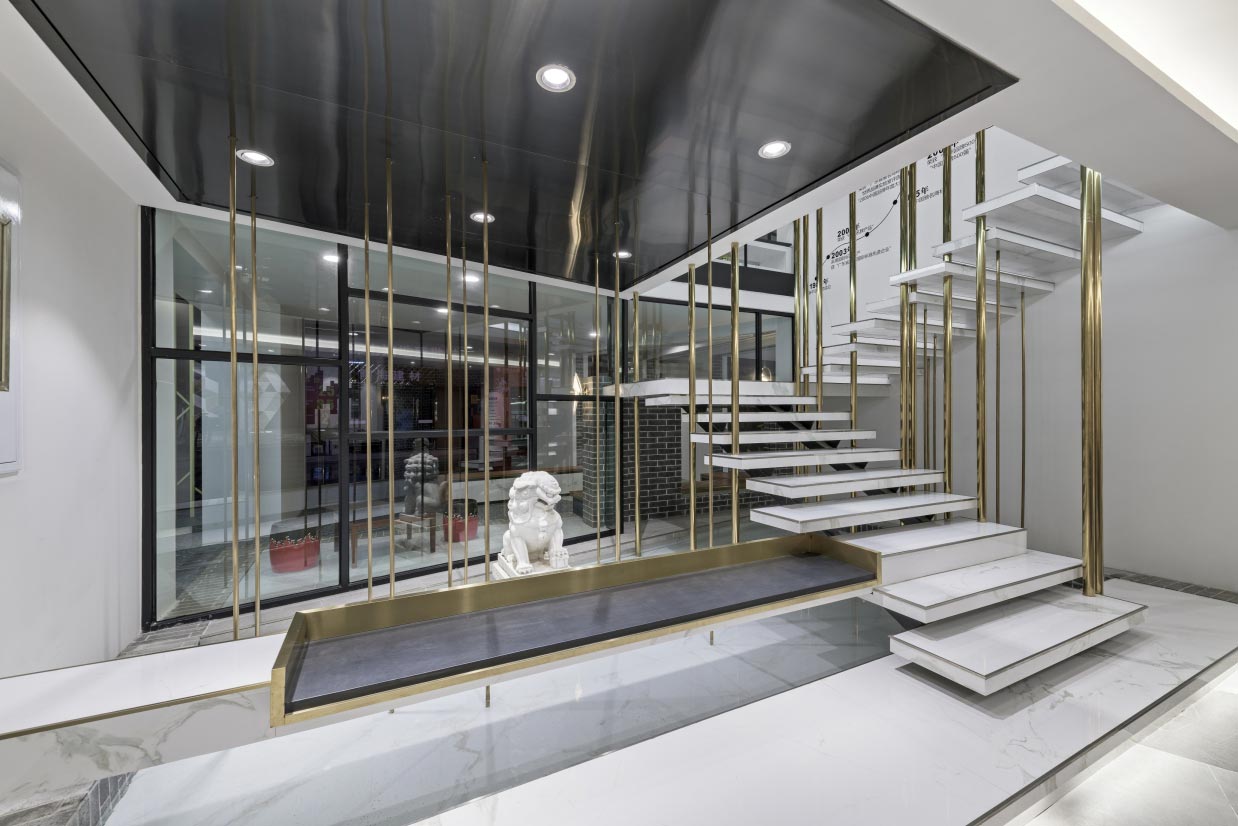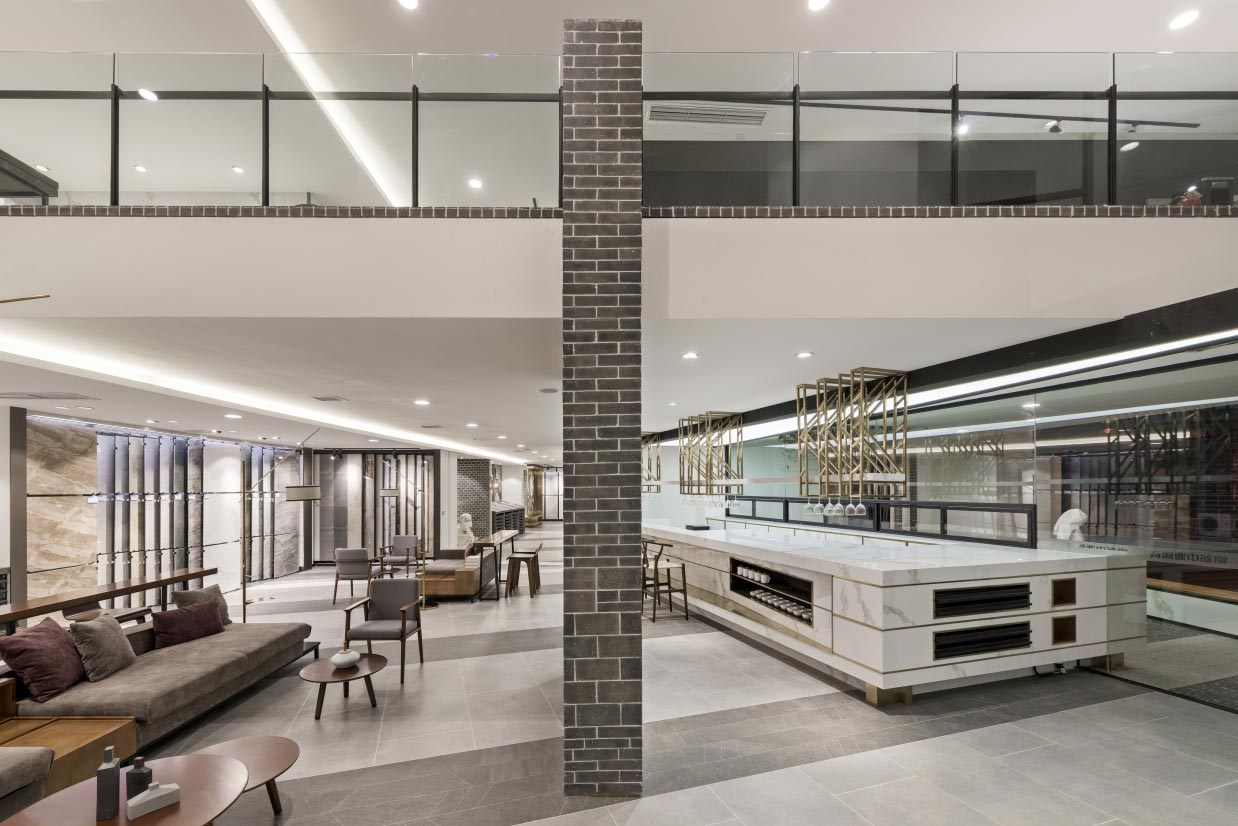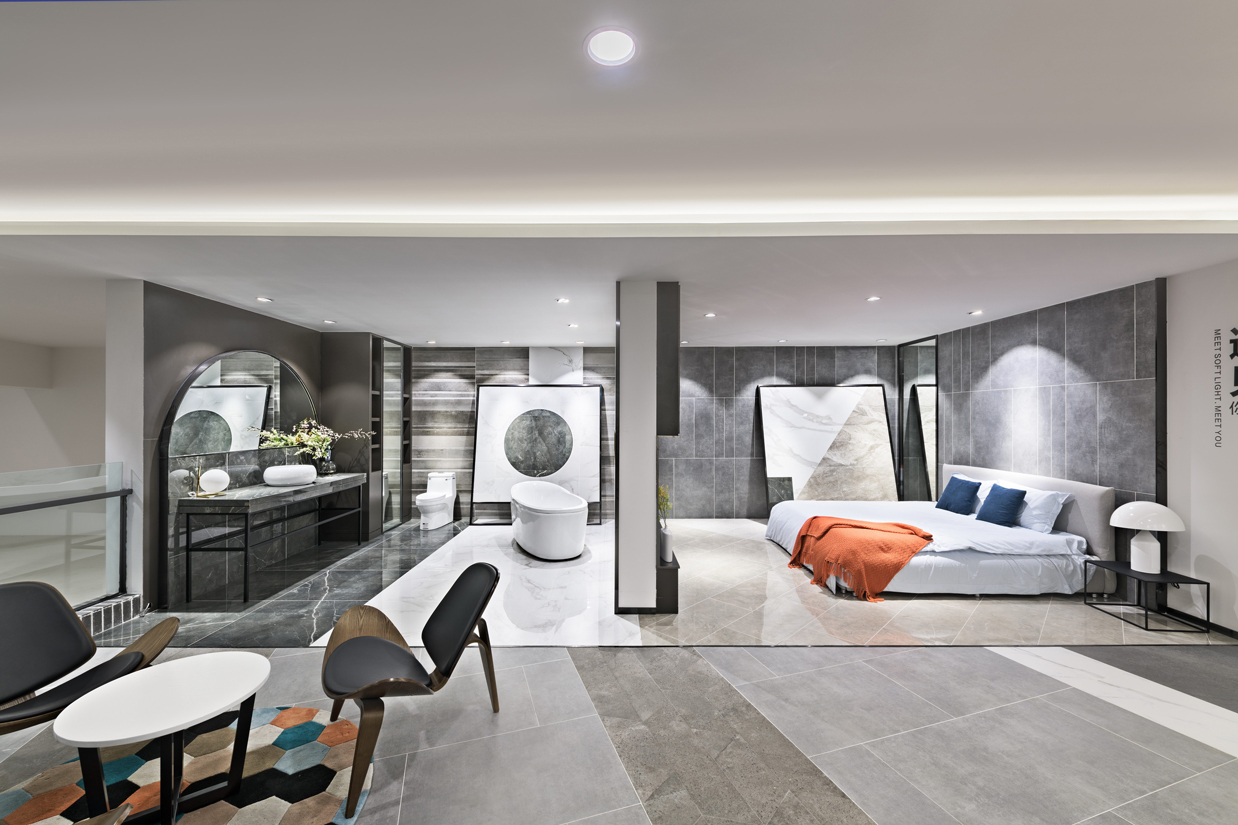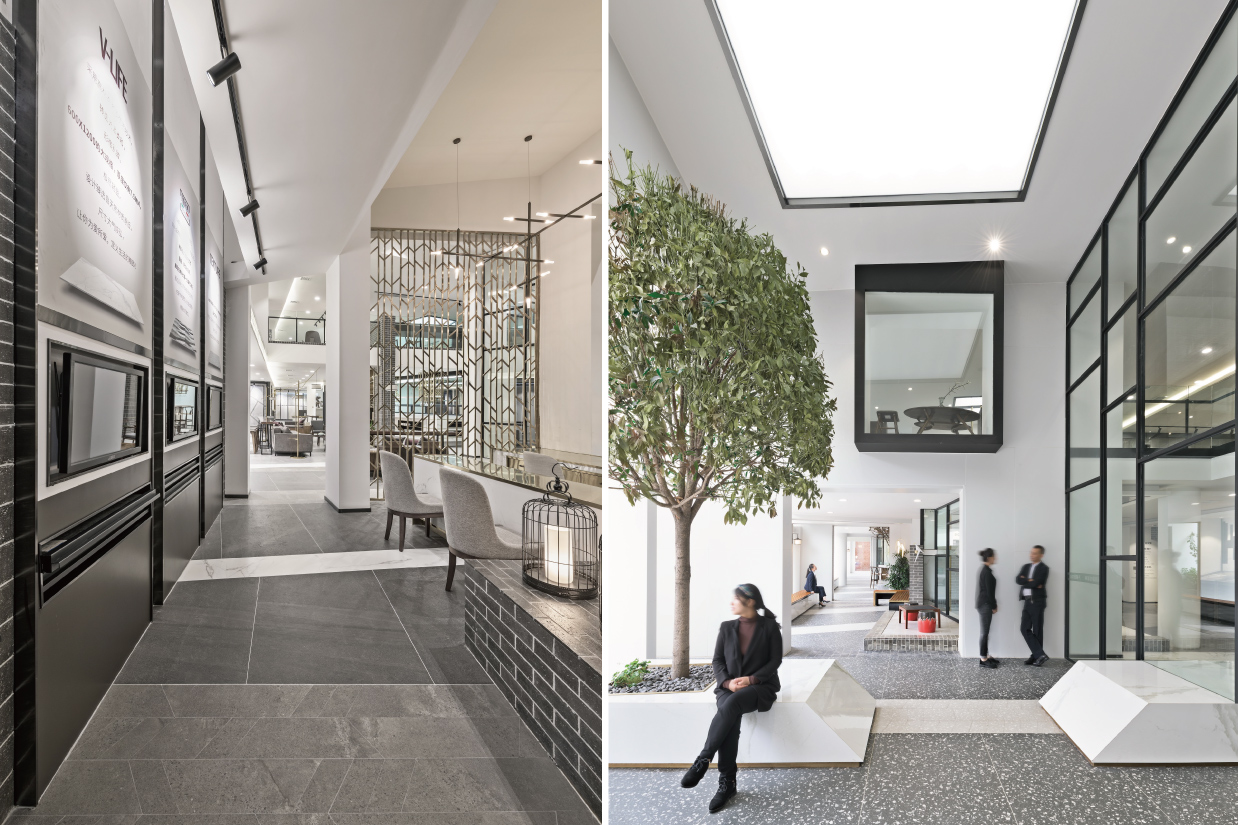Completion Year: 2017
Location: Chengdu
Completion Year: 2017
Location: Chengdu
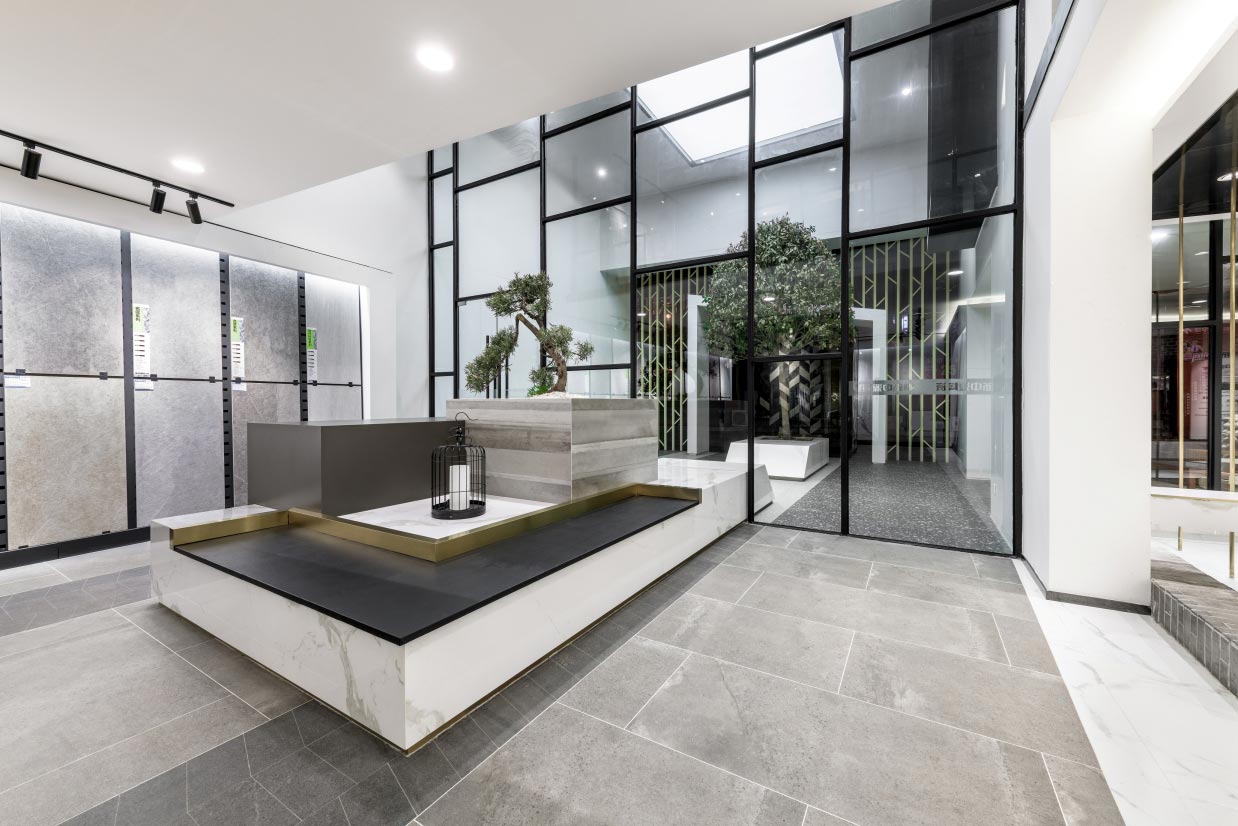
新零售模式-當代消費需求下的商業挑戰
New Retail Model – The Commercial Challenge under the Contemporary Consumer Demand
伴隨全球化時代資訊產業的快速發展,人類的購物與消費方式也產生巨變,面對電子商務市場的強力挑戰,傳統店鋪強調靜態商品展示的銷售經營模式,也有了不同變化。21世紀的新零售模式講求生活感的營造,透過社交互動的建立,藉由體驗強化使用者對商品的需求,在空間的營造上也有了嶄新的操作手法。本案為XIN ZHONG YUAN磁磚成都店,為大型建材商場中的臨街獨立商鋪,在店舖規劃上,我們將1/4原可做為商業使用的面積,以開放式場域的設計打開空間內與外,創造了層次豐富的生活體驗現場,讓人與人的互動,社交行為皆能在空間中自然產生。
With the rapid development of the globalized information industry, the culture of shopping and consumption has come a long way, and in the face of strong challenges of the e-commerce segment, traditional channel stores that emphasized the sales and business models of static merchandise display have also undergone some changes. The new retail model of the 21st century places high premium on the creation of the sense of living, through establishing social interaction, the experience to enhance the user's demand for merchandises, there has also been new mode of operation in space creation, epitomized by the XIN ZHONG YUAN tile Chengdu store, an independent street-front store in a large building material warehouse mall. In terms of its store planning, one quarter of the original commercial area was converted to open spaces with enriched layers of living experiences, where interpersonal interaction and social behaviors are flourished organically in the space.
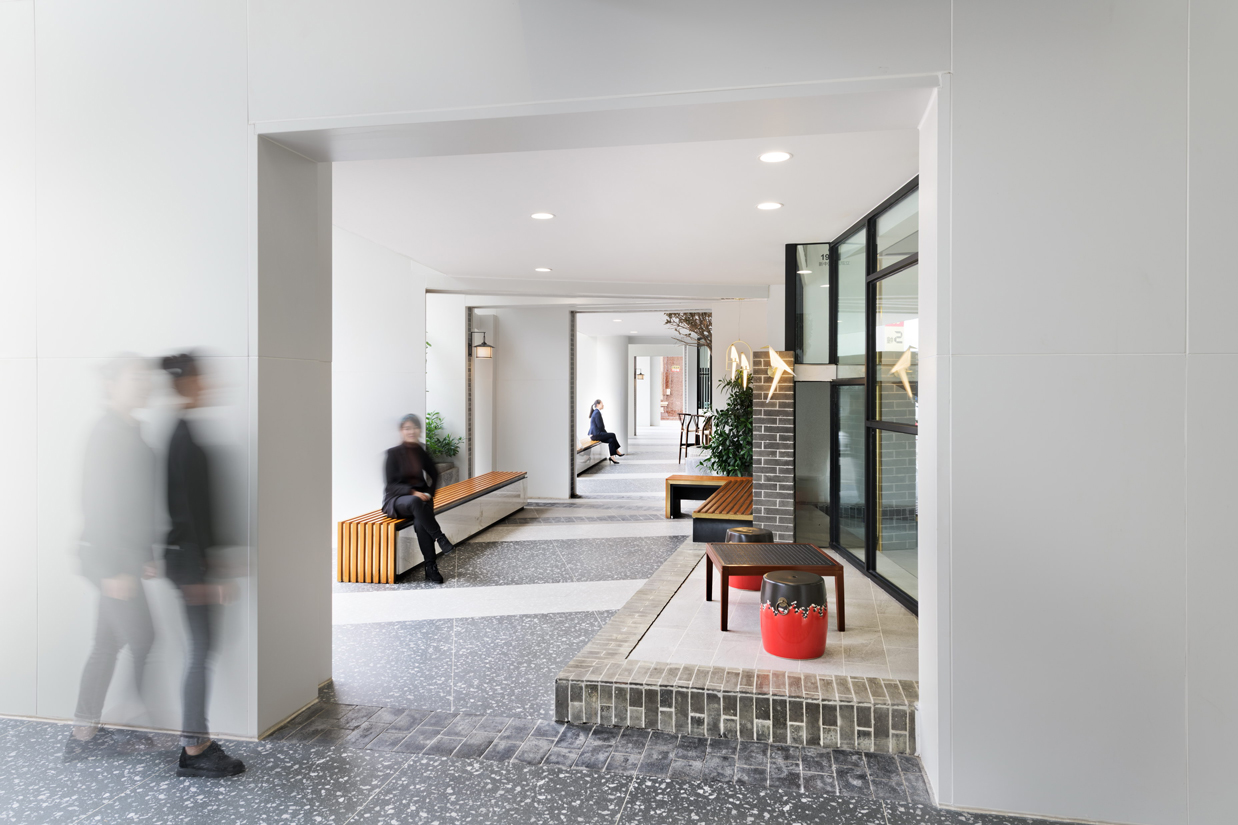
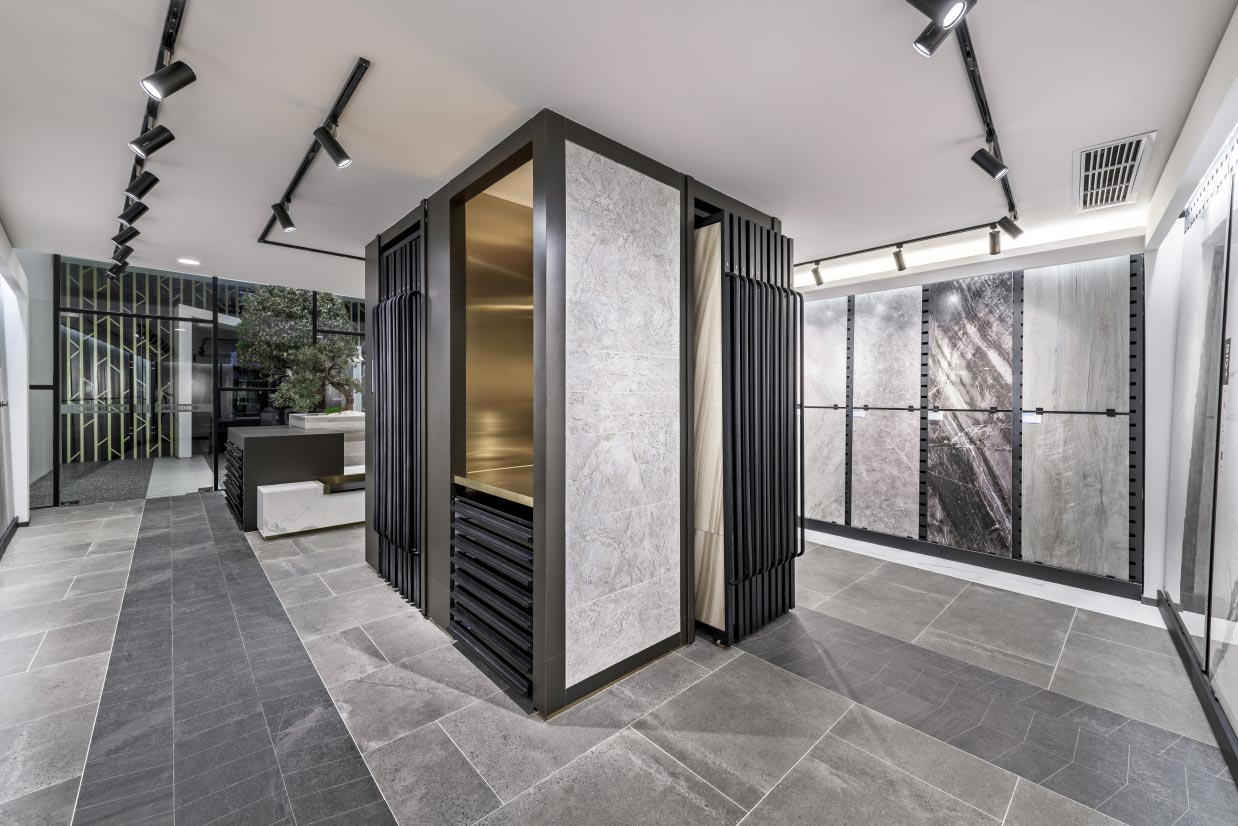
企業的空間規劃-全球在地與在地全球的交流撞擊
The Space Planning for Corporations – The Impact from the Exchanges between the Local and Global
這是全球在地化與在地全球化並存的時代,前者意指在全球化下,所有物件、設計的外貌趨近於一致,後者則象徵因著在地性的影響,讓最後均直的形貌產生差異。XIN ZHONG YUAN做為一個連鎖企業品牌,在店舖設計上我們也以此原則出發,在模矩化的商場空間範圍內,透過成都在地元素的擷取運用-包括在地老城文化「寬窄巷」、的空間意象植入,傳統斜屋頂、在地磚瓦等語彙轉譯,在連鎖企業的店鋪中打造獨特的場域特色,也在企業不斷展店的全球佈局中,重視在地化的差異特質。
As this is an era where Global Localization and Local Globalization coexist, the former denotes the homogenization of all merchandises and design appearance, while the latter symbolizes the influence of the locality contributing to the appearance differentiation amongst the homogeneous production. ZIN ZHONG YUAN, as a franchised corporate brand, the storefront design also followed such discourse, as within the modulated commercial mall spaces, and through the referencing and utilization of Chengdu City’s local elements such as the insemination of the spatiality of the old city culture, “Broad and Narrow Alley”, and the re-interpretation of architectural elements such as the traditional pitched roof, and the local bricks and tiles, etc., imbuing the commercial domains with its unique quality while exhibiting the differentiating qualities of localization in the context of its global expansion effort.
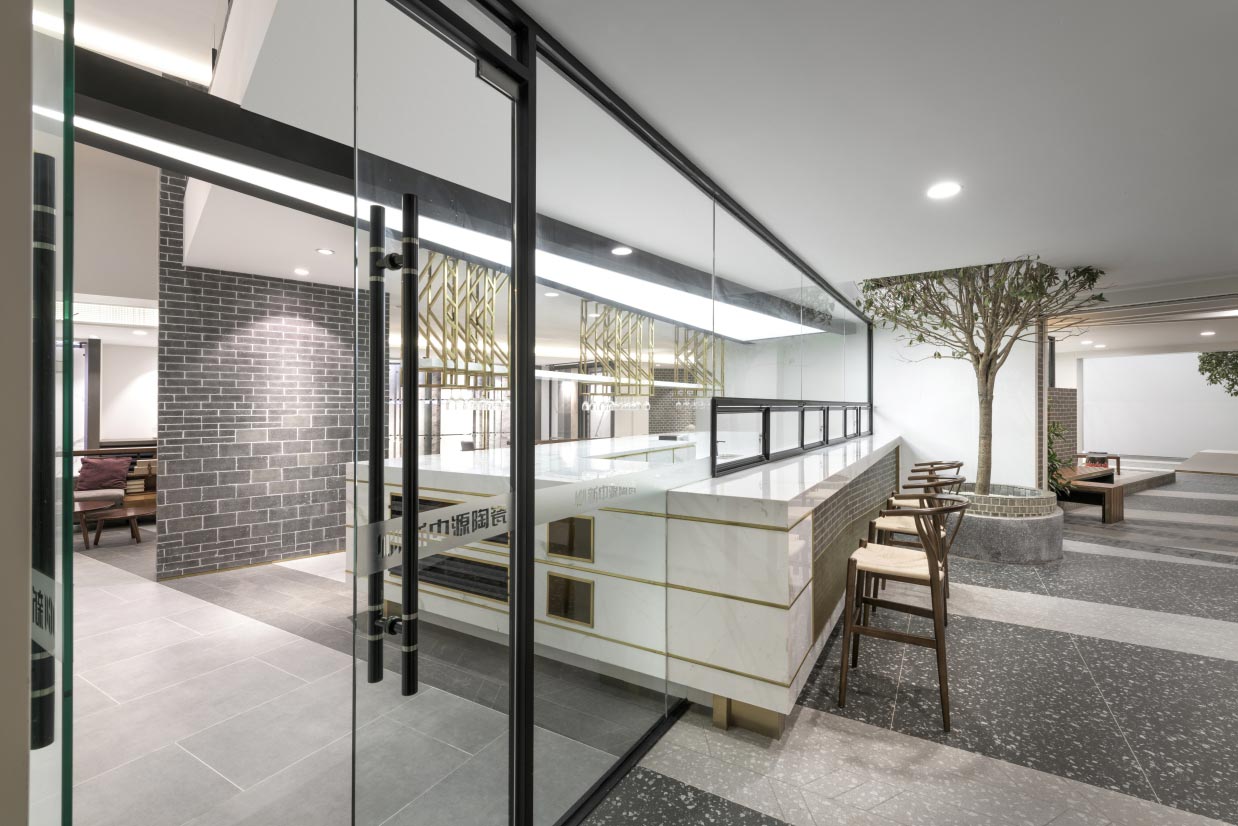
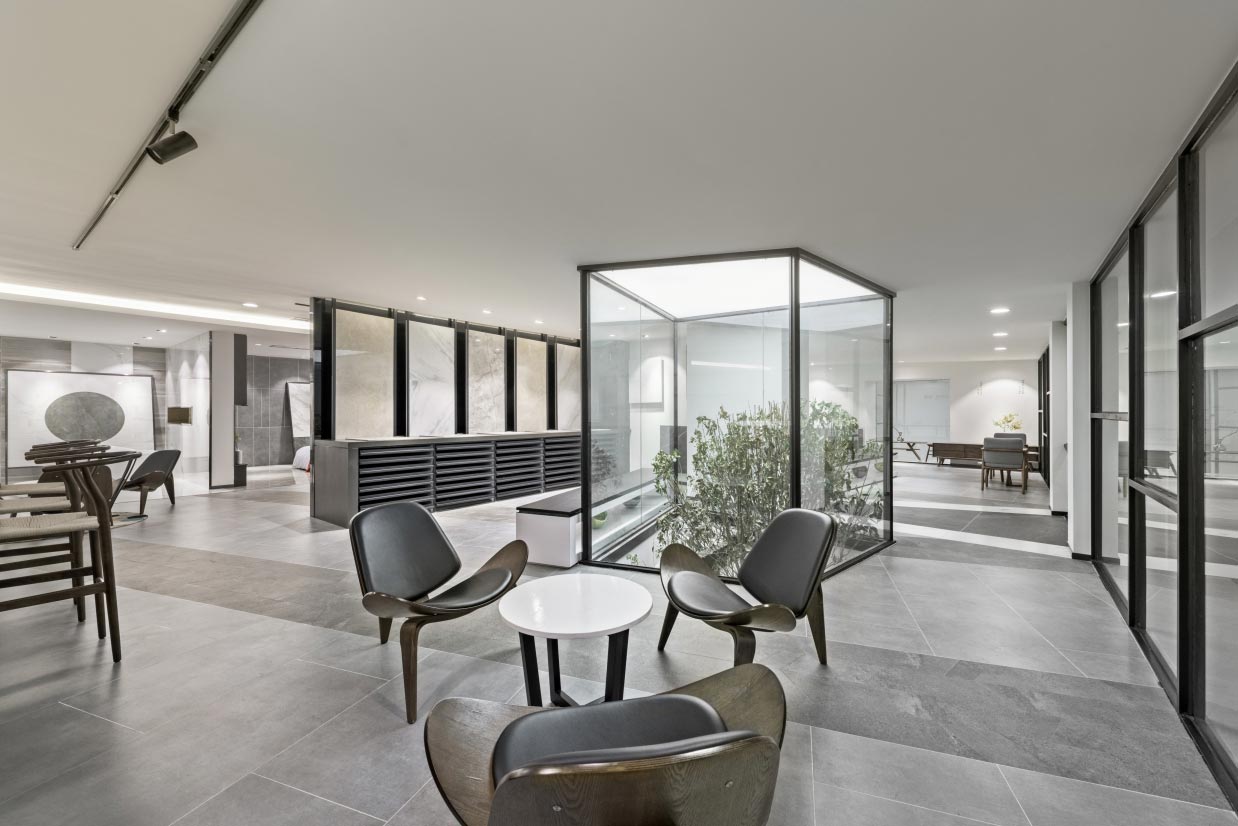
設計手法-融合在地元素的開放式設計
Design Technique – Open Design Infused with Local Elements
建築基地位於大型商場的角間位置,擁有兩個對外彼此垂直的立面,外沿街面的設計上,有別於其他店舖將立面緊鄰建築線,以求最大室內空間的設計,我們特別將建築線退縮,透過斜屋頂與寬窄巷的成都在地意象,建構出一個曲折而獨特的內外中介,將1/4左右的面積轉化為有趣的半戶外空間。從入口處開始,由左至右,分別為開放書房、吧檯、休閒雅座、戲台,透過不規則立面碎化建築的外型和周遭建築形成差異對比,為使用者創造眾多未知的可能性。
As the site of this design project was situated at the corner location of a large commercial mall, with two outward-facing elevations perpendicular to each other, in terms of the street-front elevation design, as opposed to other store locations set their elevations right along the building line for maximizing the interior area, the building line was set back to form the Chengdu Loci of pitched roof and broad-narrow alley, a unique medium between the exterior and the interior, while a quarter of the floor area was converted to interesting semi-outdoor space. From the entrance, from left to right, they were open study, bar, sitting area, and theater stage, forming star contrast with the fragmented building forms of the surrounding area.
貫穿其中的天井,成為串連空間一、二樓的垂直向連結,同時亦可由上層將影像投影至挑空牆面上,創造出上、下間的空間對話。有別於一樓主要作為社交互動的多元生活場所,二樓空間規劃則著重在專業的磁磚商品展示,結合立面錯落的斜屋頂分割,與象徵四川地區的竹葉造型格柵,將地域元素巧妙地融合在空間氛圍與情境營造中,藉由設計為消費者建構獨一無二的豐富體驗。
As the atrium space becomes the vertical link between the ground floor and the first floor, the projected images of the upper floor were displayed on the walls of the atrium, as spatial dialogue between the floors. In contrast to the spatial program of the ground floor being the main social interactive domain, the first floor is planned for tile product display complemented by the Szechuan-styled bamboo-shaped grille, in culminating a unique local experience.
